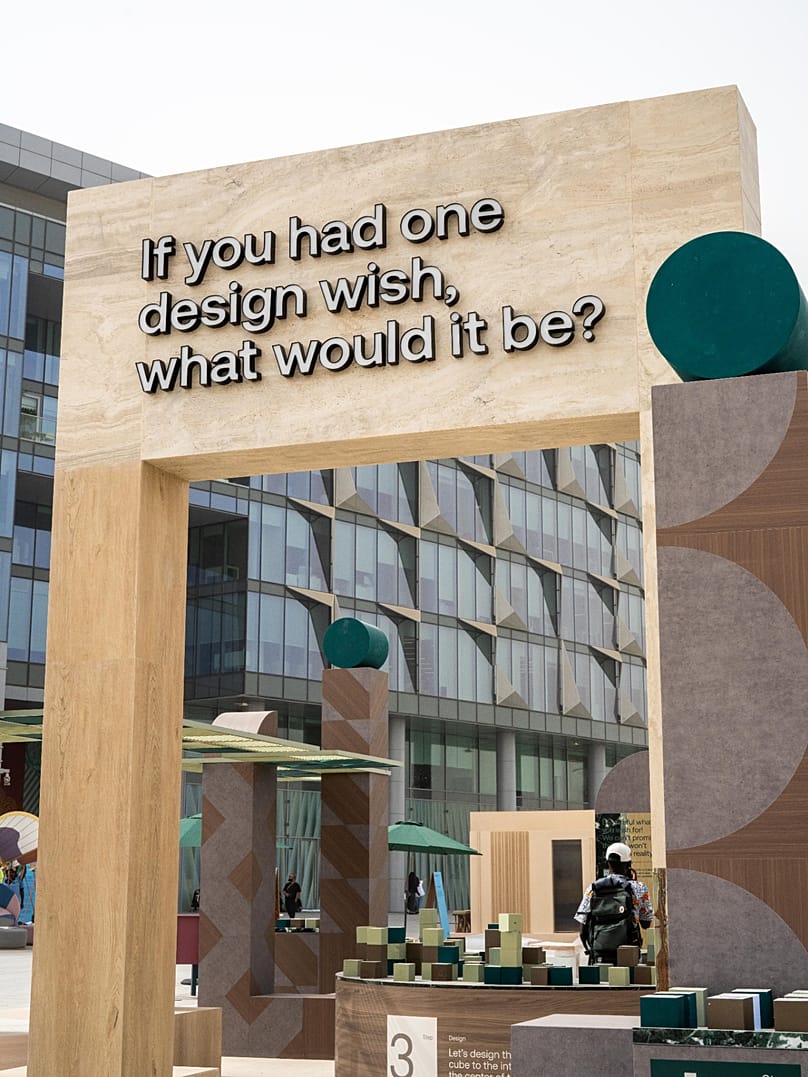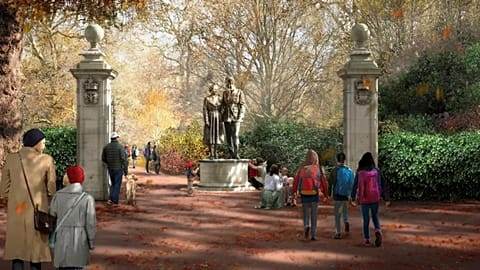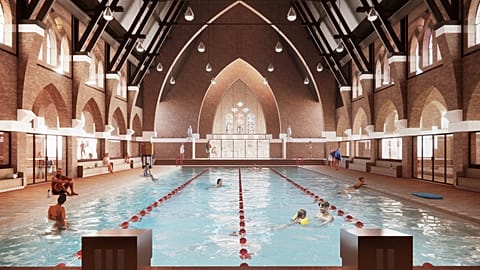As Dubai Design Week marks its 11th year and takes community as its focus, director Natasha Carella reflects on the festival's growth while championing regional voices and authentic design narratives.
When Dubai Design Week launched in 2015, it welcomed 30,000 visitors. A decade later, the festival has grown fivefold, yet director Natasha Carella is adamant that it remains "digestible on a human level."
This balance – between ambitious scale and intimate accessibility – defines much of her approach to one of the region's most significant design gatherings.
Running until 9 November 2025, the 11th edition brings together over 300 participants at Downtown Design, large-scale installations, and a growing roster of programming that deliberately sidesteps what Carella calls "buzzwords." Instead, the festival is guided by three core principles: showcasing high-quality, original design; representing authentic voices from the region; and exploring how design can support a collective future.
Carella speaks candidly about the challenges facing any large-scale event - rejecting claims of sustainability while acknowledging the imperative to "figure out new ways to build and to make."
It's this honesty that shapes Dubai Design Week's programming, from experimental materials like datecrete (made from date seeds) to explorations of vernacular architecture across the Arab world, where design traditions in Kuwait differ vastly from those in Bahrain or the diverse landscapes of Saudi Arabia.
This year's theme, community, reflects both the UAE's national focus and Carella's commitment to platforming what she calls "smaller communities within our programming" – from Bootleg Griot's public library project celebrating African literature to an all-Emirati flamenco group. As design weeks proliferate across the region, from Doha to Cairo, Carella sees only opportunity in the possibility of representing diverse voices across the region: "We all have our roles to play."
In conversation, she discusses the festival's evolution, the rapid development of Dubai's design ecosystem, and her vision for deeper collaboration across the Global South – reminding us that design at its best creates spaces for exchange, not competition.
Euronews Culture: Can you tell us about Dubai Design Week and what makes it unique?
Natasha Carella: Dubai Design Week is now in its 11th edition, taking place from 4-9 November. It's slightly different from other design weeks in that typically they're really kind of citywide. The most overwhelming would be Milan Design Week. Whilst we do have things happening around the city, the majority of the programming still remains within an area called Dubai Design District, colloquially known as D3. This is where you have all of the different businesses, companies and offices across various design disciplines. You've got Fosters and Partners, Grimshaw, through to Chopard or Van Cleef, through to Adidas, Puma, Lego, Leica. They're all here, which is really lovely because a lot of them are participants within the event as well as an audience. When we started in 2015, it was about 30,000 people. Now it's about 150,000 people. But it still remains digestible on a human level, which I think is really important.
How do you approach programming for Design Week?
NC: We try to shy away from buzzwords. Instead, the way that we bring our content together is through a principled approach. There are three areas. One is making sure that it is high quality and original design. The other, which is really important for us, is that it truly is representative of the voices from this region. There's still a lot of flattening when it comes to the Arab world. There is such nuance when it comes to vernacular architecture design in Kuwait versus Bahrain, let alone within the humongous geographic area that is Saudi Arabia.
And then the third thing is looking at how design can support our collective future. I'm the first one to say no event is sustainable. So let's not pretend otherwise. If we're not truthful about where we are right now, we'll never actually resolve the problems that are there. What we can do is figure out new ways to build and to make. How can design help marginalised communities?
What are the main components of Design Week?
NC: We have our two fairs, Downtown Design, which is our trade fair. This year we have over 300 participants – a really good mix of international hero brands, everything from furniture through to textile, as well as regional representation. We started another fair last year called Editions, which is looking at limited edition arts and design. We're part of the Art Dubai group, so it's the same ethos looking more at the Global South.
Then we have large scale design objects or installations. Take Nikken Sekkei, who are partnering with a Japanese family who for hundreds of years have been working with wood joinery, creating this pavilion with a master tea ceremony inside. Or there's ARDH Collective, for the most part from India but born and raised in Dubai, who invented dunecrete, a material made using desert sands. They're using this to show that there are alternative materials that can be used to build and make."
How has Dubai's design ecosystem evolved?
NC: If I had to look at even 10 years ago, what design meant here was a lot of importing products and furniture – there just wasn’t any supply chain here. But, in typical Dubai fashion, that has really evolved in such a short period of time. You have amazing academic institutions like the American University of Sharjah with an incredible architectural faculty producing really great new emerging talent.
Equally there are cultural institutions like Tashkeel, with its programme called Tanween. They take a cohort of young creatives and help them develop products through mentorship, then platform them at Downtown Design. And then government support as well. This year D3 launched the inaugural D3 awards for anyone up to five years into their career.
This year's theme is community. How does that play out in the programme?
NC: This year is the year of community in the UAE, and it does galvanise and bring people together. One of our special commissions is called Urban Commissions. This year's winners focused on the courtyard as a community space. They're creating a typology which looks at how indigenous materials were used in coastal versus mountainous areas – coral in coastal areas versus stone and palm leaves in mountainous areas.
The D3 architecture exhibition with RIBA is also focusing on community. And for us, community means including different types of smaller communities within our programming. There's Bootleg Griot – three young kids who started this public library project bringing together African literature. There's an amazing all-Emirati boy group who only do flamenco music. For us, it's how we use our platform to give voice and space to communities you wouldn't necessarily see in mainstream Dubai.
How do you see Dubai Design Week's role within the broader regional design landscape?
NC: We're seeing a lot of different design programs happening regionally which is so important. You have Design Doha in Qatar, Tanween Design Week in Saudi, Amman in Jordan coming back next year, Cairo Design Week. I get a lot of people asking what are you going to do when all these spaces open up. I have to remind people that in London you have a thousand events happening every single day! We actually need more of this. We all have our roles to play. There's only strength in that. We all have the same mission – to represent the design coming from here, creating spaces where exchanges can happen with the global community.
What do you see for the future?
NC: Obviously AI is weaved in, but we need to be a little bit more concerted about it. There is so much potential when it comes to supporting design disciplines, but we have to remember these are large language models that have come to fruition because they're basing it off of human practices and creativity. Where is that fine line when it comes to original design or IP? How can we remain human-centered?
Dubai is a really interesting place because they work quickly in terms of policy making, in terms of course correcting. They're okay to fail and you can only figure things out if you fail. And for us it's really continuing to expand relationships with the larger global South. There's Lagos Design Week as well – I personally would love to reach out to them and see how we can do things together to help bolster more non-western markets and narratives.





















